Need Help?
Privacy PolicyLive Chat
What is Single Pair Ethernet?
Single Pair Ethernet (SPE) is an Ethernet network implementation that uses a unique physical layer (PHY) transceiver over a single pair of wires. SPE reduces system cost, weight and wiring complexity when compared to traditional Ethernet multi-pair CAT5 cabling. OSI network layers 2 to 7 remain the same across all the Ethernet physical layer types, eliminating additional software modification to implement SPE.
SPE enables you to take advantage of an all-Ethernet architecture while tailoring the system to the unique needs of your market segments. SPE, also referred to as “T1”, can support multiple bandwidths and distances and the IEEE® defines SPE in the 802.3 standards group.
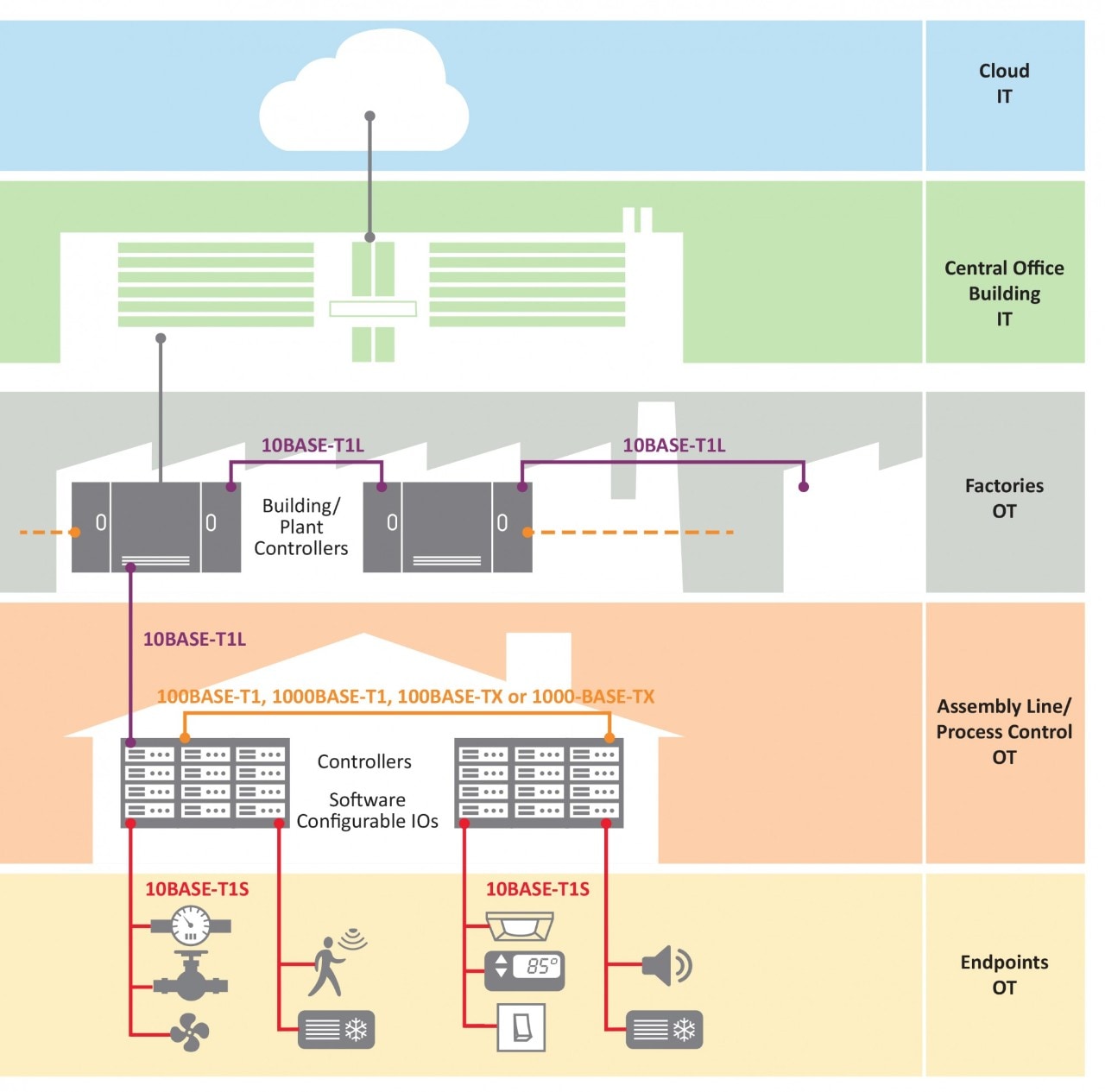
SPE Brings Benefits to Designers
Industrial Control and Factory Automation
Industrial control and factory automation benefit from simpler components, software and wiring when implementing SPE networking. SPE also eliminates gateways and by using 10BASE-T1S technology for sensors and actuators, you can enable a single wiring run to the sensor/actuator array.

Factory Control
- Actuators
- Assembly lines
- Packaging lines
- Sensors
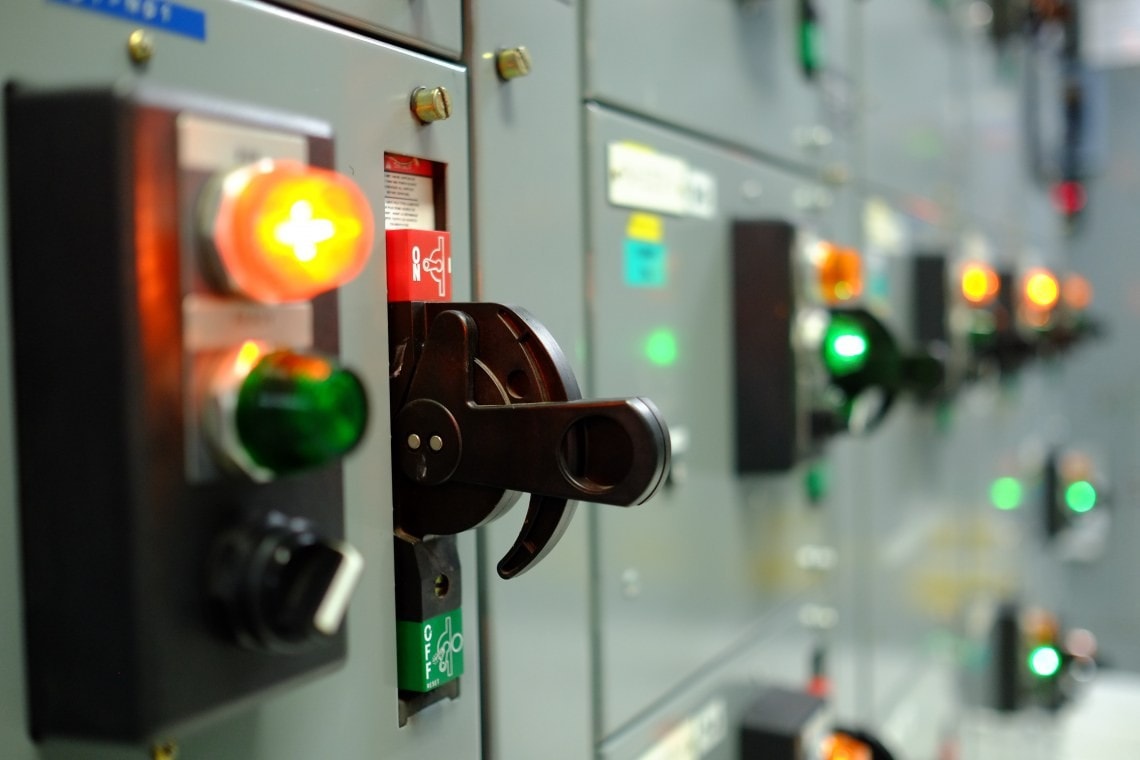
In-Cabinet Racks
- Fans, temperature sensors, voltage monitors, DC-DC converters and optical modules
- Intra-system management interface in racks
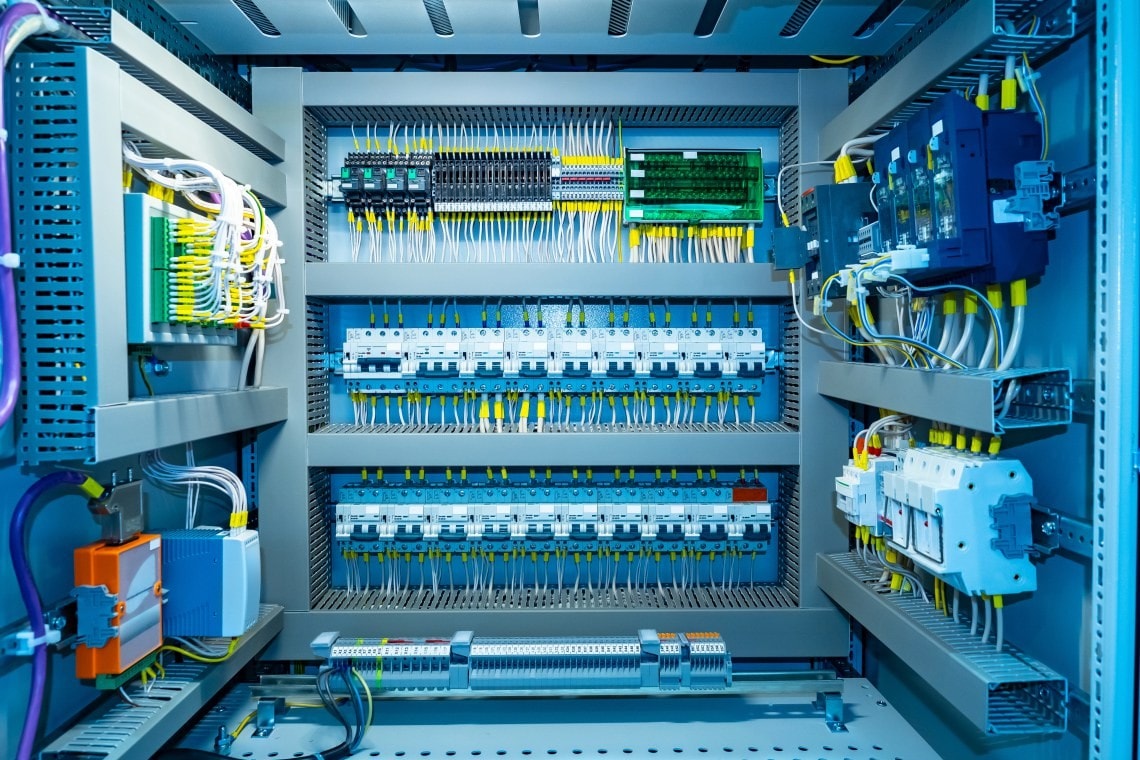
Control Units
- Buttons
- Converters
- Relays and input/output cards
- On/off switches
A centralized switch capable of 10/100/1000 Mbps operation offers wide flexibility for industrial applications. With concerns about long cable runs and resolving mixed protocols while maintaining high reliability, bandwidths of 100 MB or 1 GB support the needs of complex motor control and system controller communications.
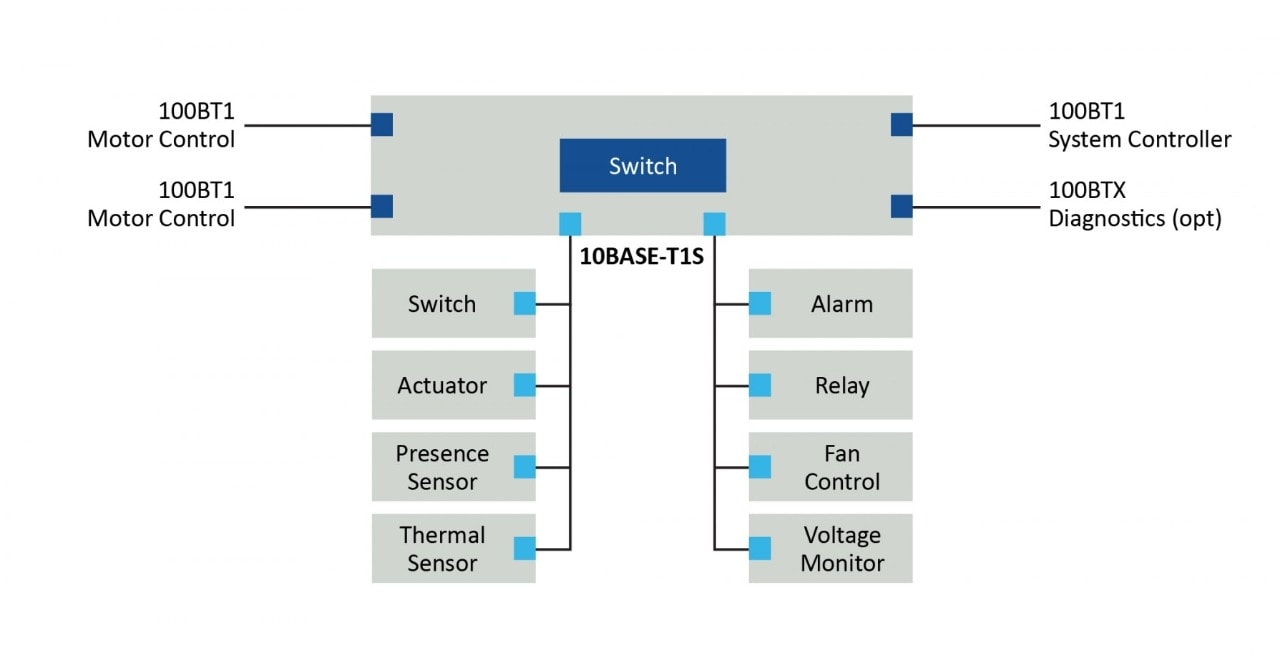
Building Automation
Building automation benefits from Ethernet as there is no need for protocol translation between proprietary protocols. Networks can mix traditional Ethernet and SPE to optimize data and control installations. A large percentage of building control tasks require basic signaling and very low bandwidth. You can meet both of these requirements in a more cost-effective manner using SPE connections.
Use cases in building automation include:
- Motion detection and lighting
- Elevator control
- HVAC control
- Sensors
- Light sensing and window shade control

A switch capable of 10/100 Mbps operation offers flexibility for building control applications. The mix of bandwidth options supports the needs of building systems and communications.
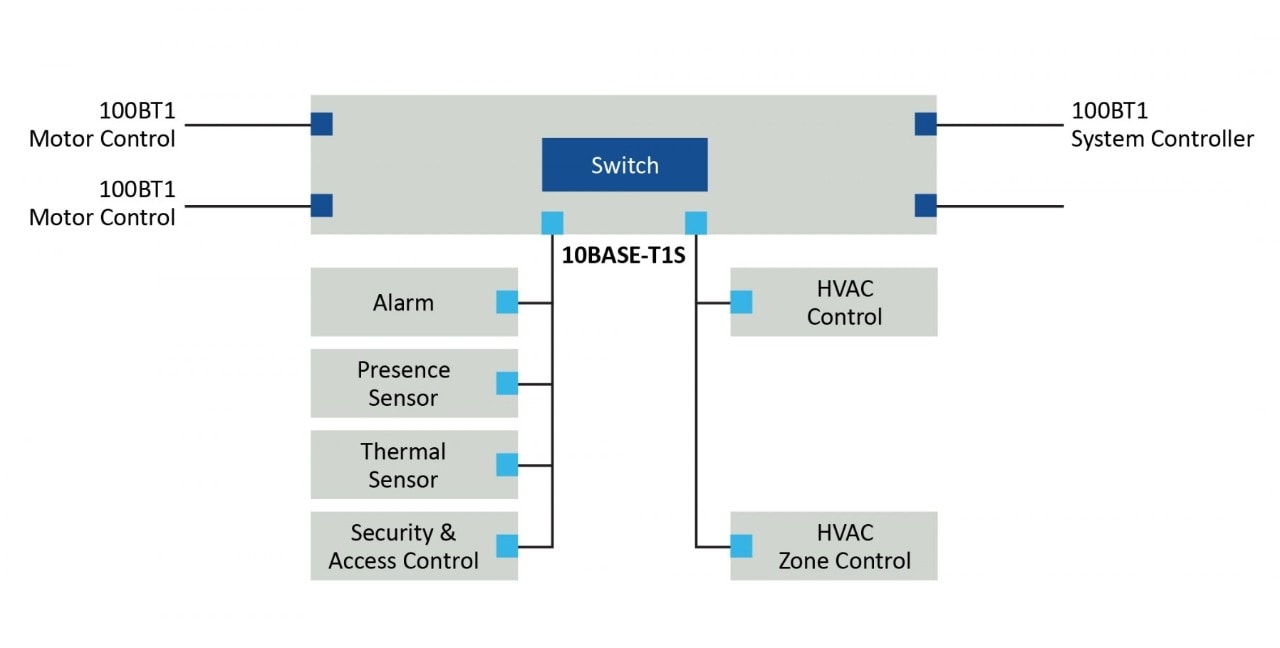
Data Centers
Data centers embrace Ethernet for virtually all connectivity needs outside the board level. Use of SPE ensures there is no need for protocol translation between networks while offering cost optimization for tasks that require basic signaling and lower bandwidth.

Network Equipment
- Intra-system management interface in servers and switches
- Fans, temperature sensors, voltage monitors, DC-DC converters and optical modules

Computer Server and Network Switch Control Planes
- Configuration and monitoring
Many industrial-type applications exist within data center infrastructure, including HVAC controls, motors for zonal controls and sensors that monitor individual zones, racks or pieces of equipment.
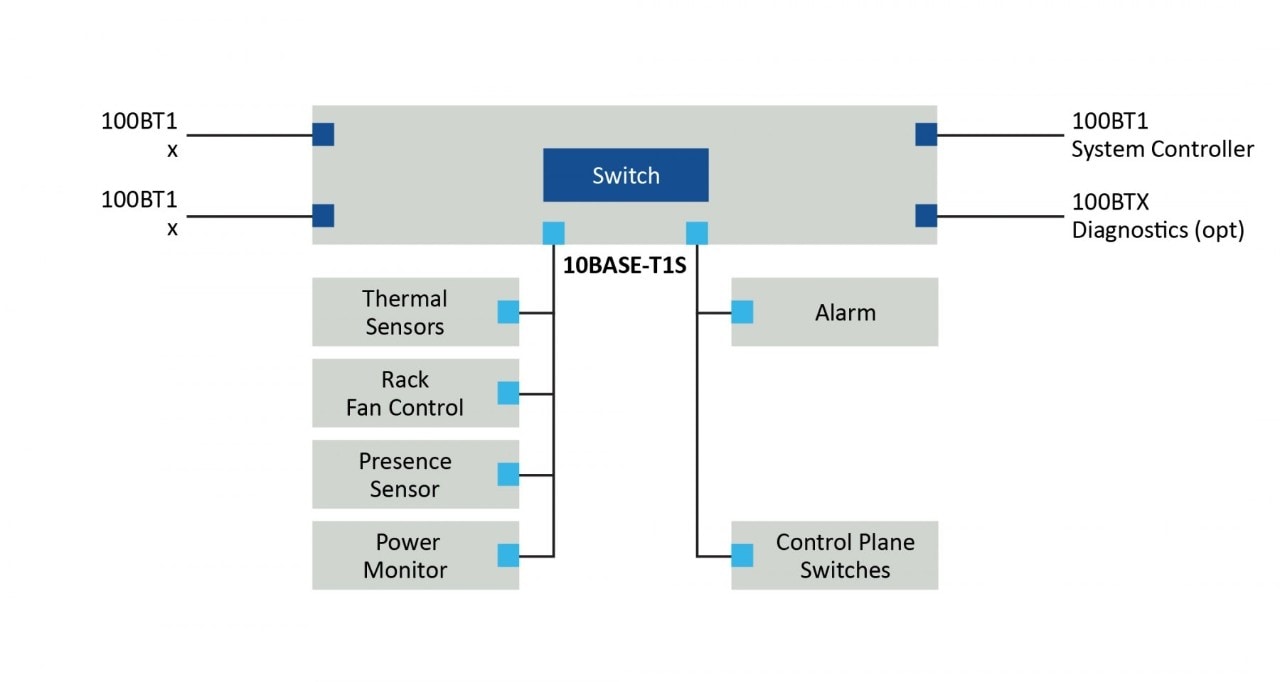
Automotive
The automotive industry is steadily moving toward Ethernet as a data backbone within the vehicle. Ethernet offers a scalable, cost-effective and known protocol, which does not require auto OEMs to invest in the development of industry-specific protocols. Protocol-compliant variants like SPE offer additional opportunities for cost optimization and weight reduction for a wide variety of functions that require basic signaling or lower bandwidth.

Door Zone
- Window control
- Lock control
- Car access
- Mirror control
- Ambient lighting


Front and Rear Zones
- Temperature sensors
- Lighting control
- Ultra-sonic sensors
Automotive systems, with their broad range of use cases, are ideal systems for bandwidth rationalization and cost optimization. This market as a whole benefits from the reduced weight and size of SPE. The 10B-T1S specification easily supports the needs of simple switches and actuators found in door, seating and lighting systems as well as connecting individual sensors.
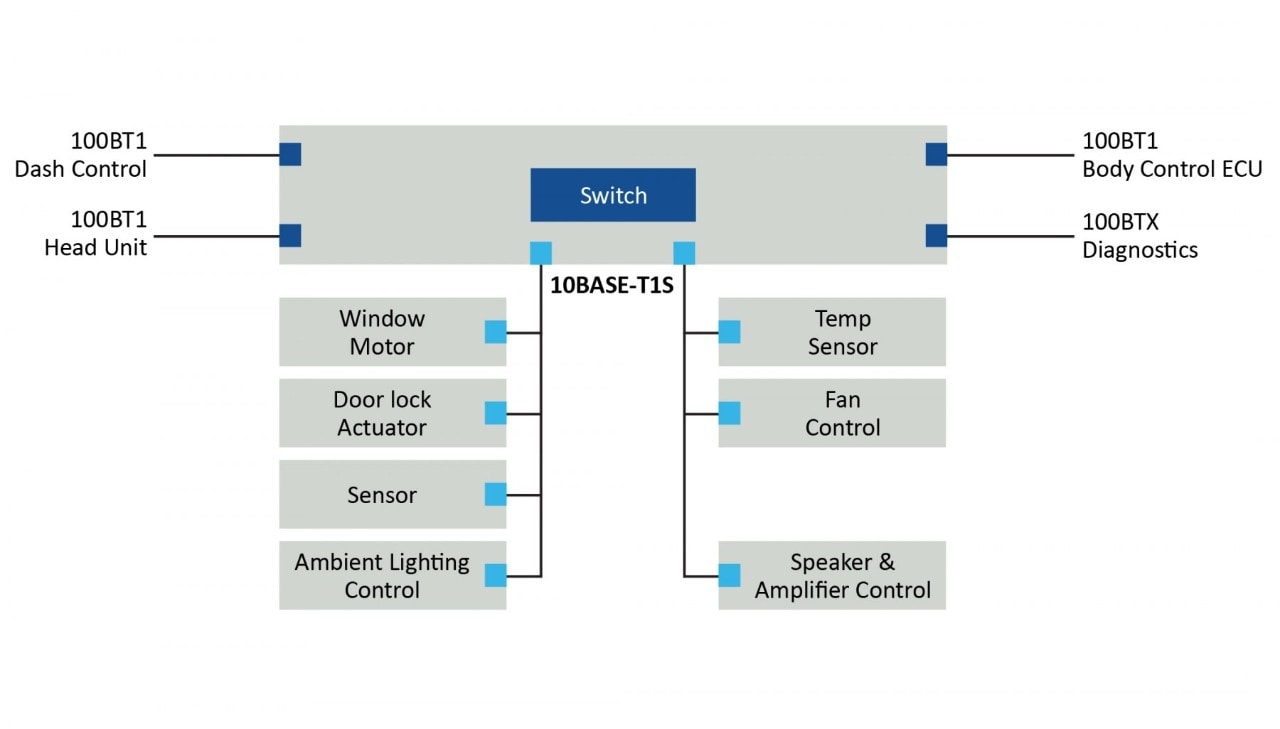
Industrial Robotics
Robotic handling and motion has become increasingly sophisticated. Multi-axis motion requires many additional motors and actuators. At the same time, sensors in fingertips have enabled robots to handle everything from lightbulbs to iron assemblies. These abilities have required sensors and electronics to be placed in difficult-to-access locations. Connecting all of these components has become one of the major challenges in advanced robotics. SPE offers reduced wire size and significant bandwidth to enable communication between controllers, motors, actuators and sensors.
- Axis and extremity control
- Axis motors
- Actuators
- Pressure sensors
- Temperature sensors

Robotics systems are becoming increasingly sophisticated and they require a range of bandwidth options. However, tight spacing within the robot structure calls for small wires and wiring bindles to make connections to the extremities while providing long-term reliability. Multi-rate switches support low to high bandwidths. The 10B-T1S specification enables efficient connections to individual sensors as well as between local system controllers. 10B-T1S enables reduced wire count and higher reliability while supporting increased functionality at the extremities.
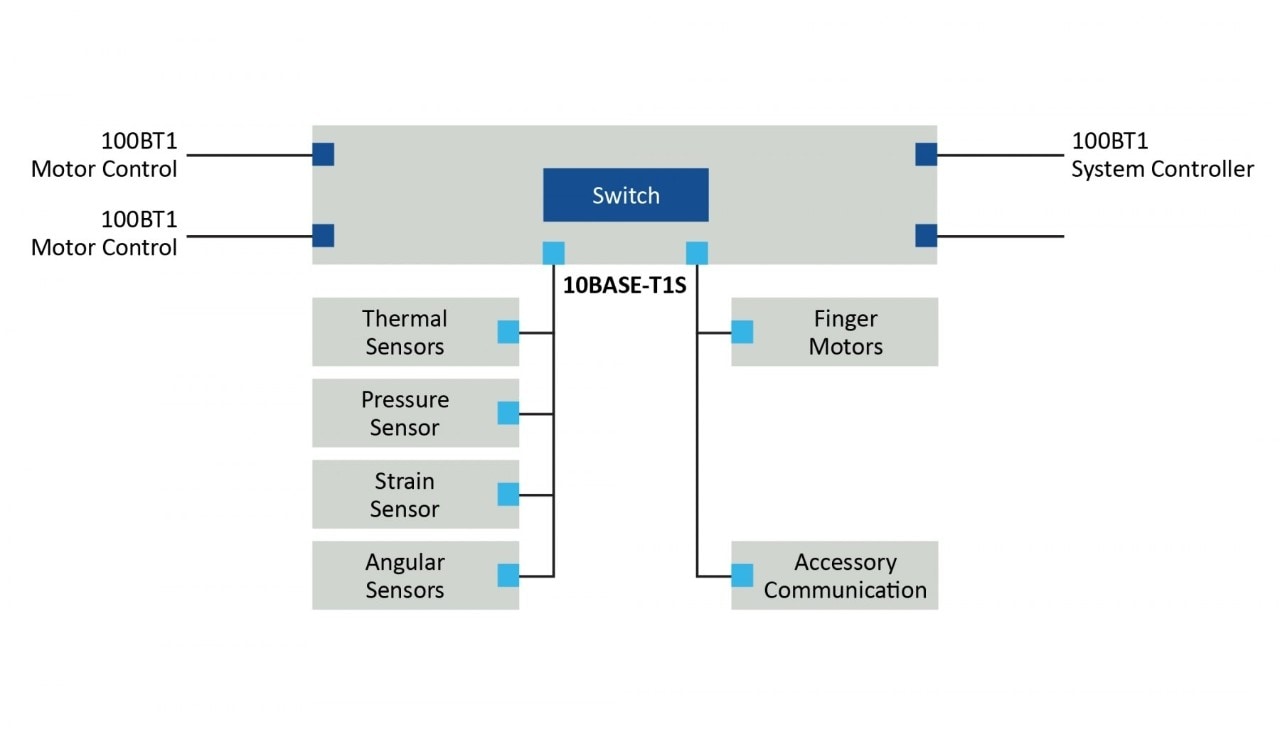
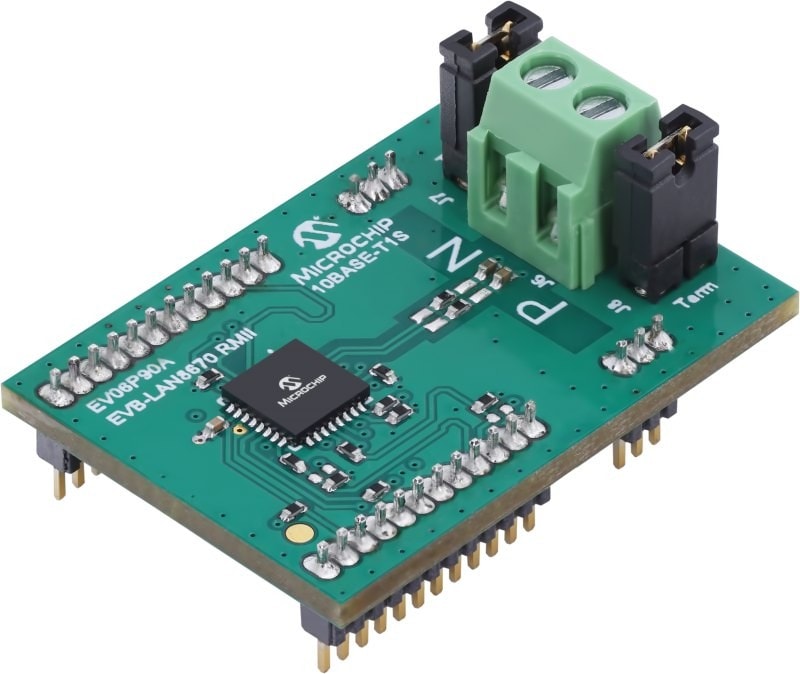
EVB-LAN8670-RMII
Part Number: EV06P90A
The EVB-LAN8670-RMII enables 10BASE-T1S Ethernet communication with the SAM E54 Curiosity Ultra Development Board or the SAM E70 Xplained Ultra Evaluation Kit.
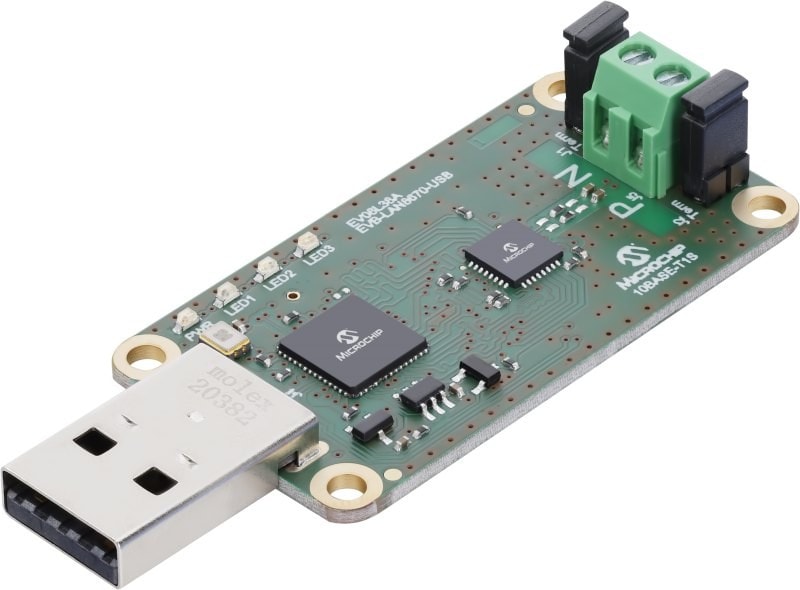
EVB-LAN8670-USB
Part Number: EV08L38A
The EVB-LAN8670-USB connects a USB interface with a 10BASE-T1S Ethernet network interface. The adapter serves as a network card that connects applications via USB 2.0 to the 10BASE-T1S network interface.
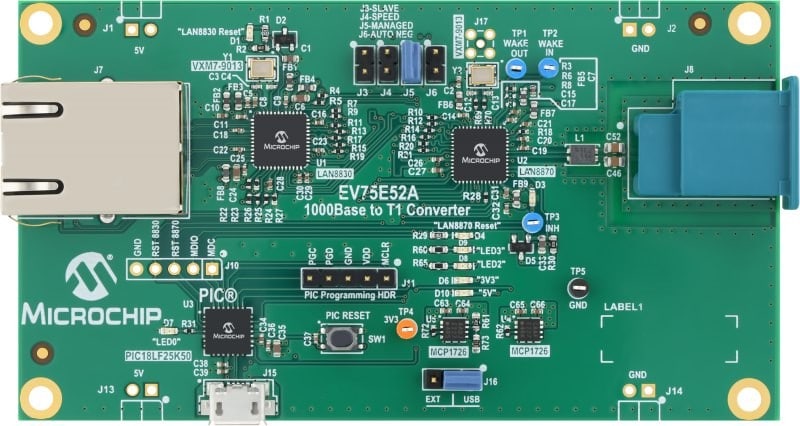
EVB-LAN8870-MC
Part Number: EV75E52A
The EVB-LAN8870-MC evaluation board is a 1000BASE-T1 (Single-Pair Ethernet) to 1000BASE-T (Gigabit Ethernet) media converter used in evaluating the LAN8870 1000BASE-T1 Ethernet transceiver.
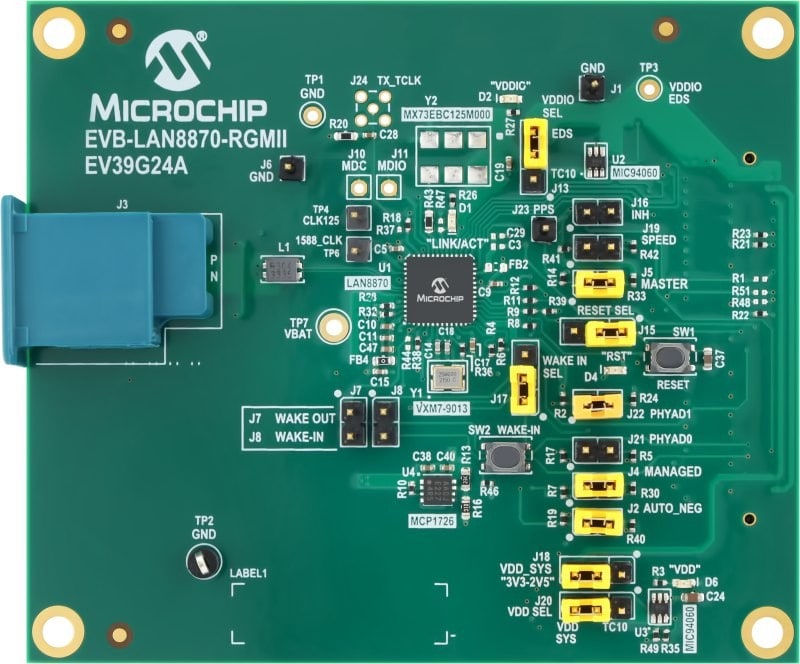
EVB-LAN8870-RGMII
Part Number: EV39G24A
The EVB-LAN8870-RGMII evaluation board is a plug-in card that interfaces directly with a mating Microchip host processor controller board, such as the SAMA5D3 Ethernet Development System (EDS) board.
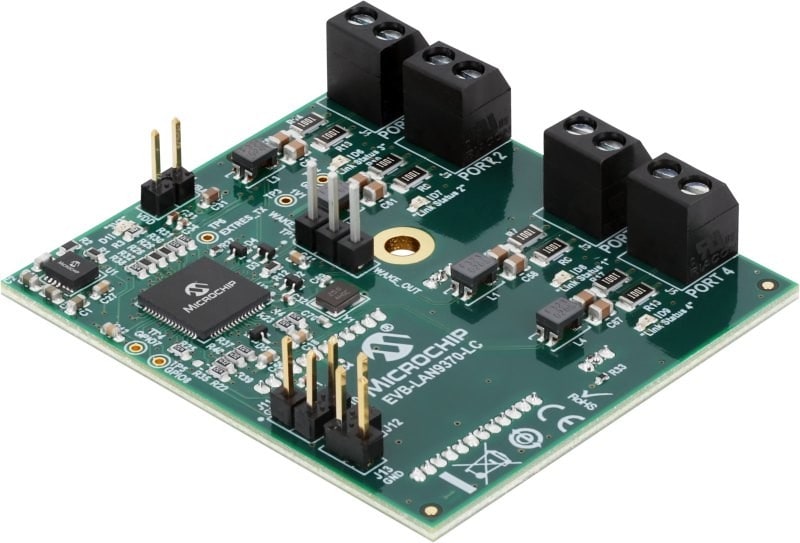
EVB-LAN9370
Part Number: EV64C55A
The EVB-LAN9370 board is a 100BASE-T1 switch plug-in card for the SAMS70/E70/V70/V71 Xplained Ultra board. Together, the two boards evaluate the LAN9370 switch.
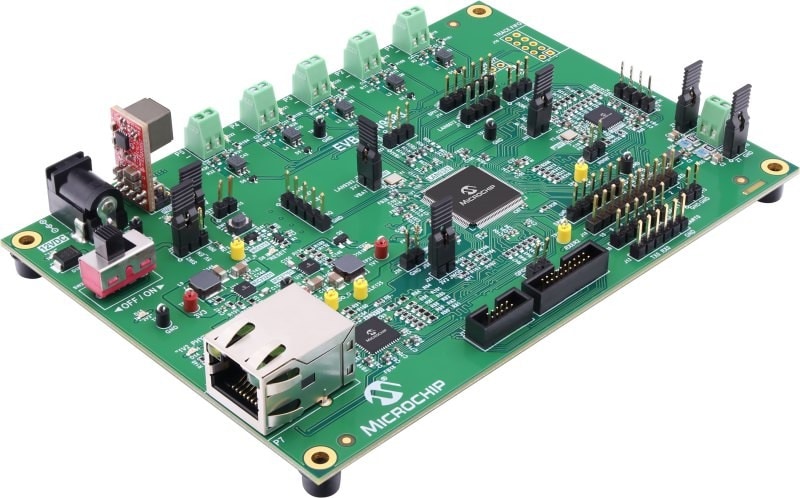
EVB-LAN9383
Part Number: EV04C47A
The LAN9383 evaluation board provides a convenient and small-form-factor evaluation platform for our seven-port, safe and secure family of Time-Sensitive Networking (TSN) Gigabit Ethernet switches.
- PHYs
- Switches
- USB/HSIC/PCIe Bridges
Similar Devices
Similar Devices
Similar Devices
To learn more about SPE technology, visit the resources and websites below.
Transform Your Network With Our LAN887x Ethernet PHYs
As the demand for high-speed and reliable networking grows, our LAN887x family of advanced Ethernet physical layer transceivers offers exceptional performance and robustness. These 100BASE-T1 and 1000BASE-T1 Ethernet PHYs are compliant with IEEE® 802.3bw-2015 and IEEE 802.3bp-2016 standards and deliver seamless connectivity, superior diagnostics and support extended cable lengths.